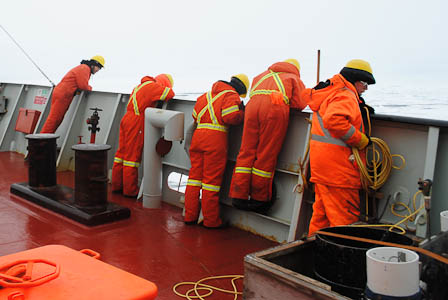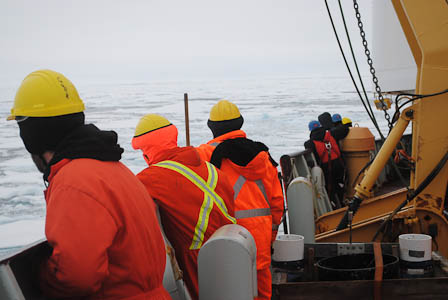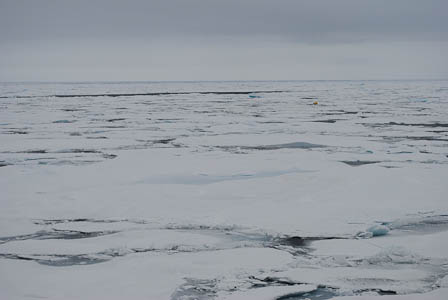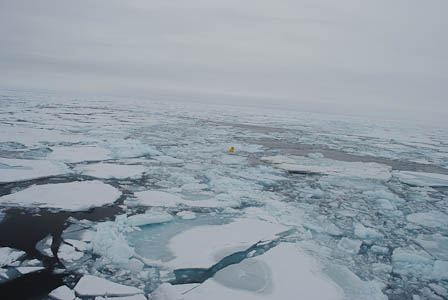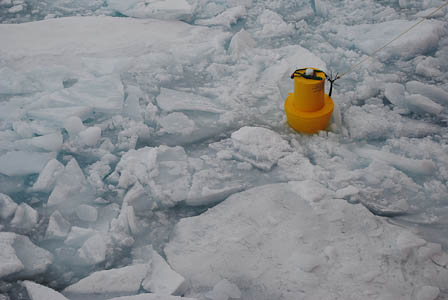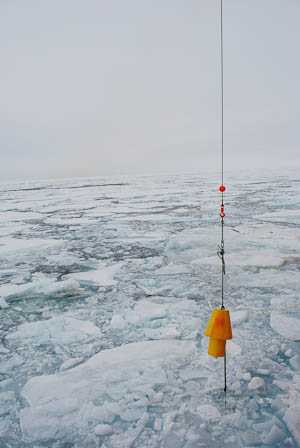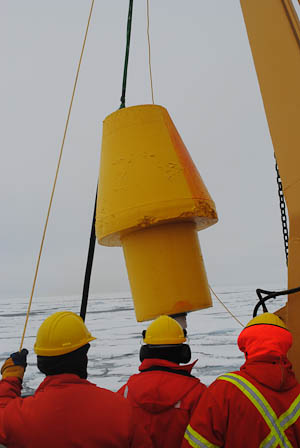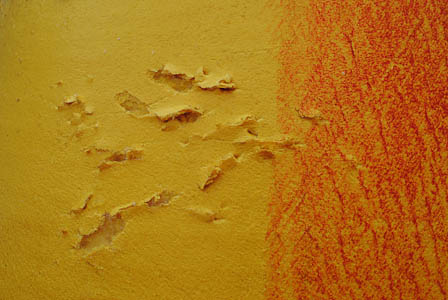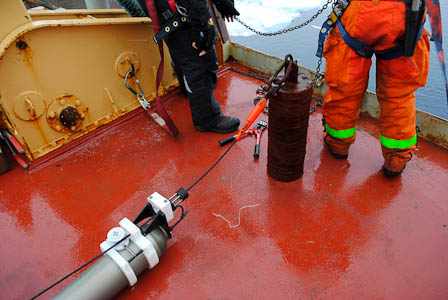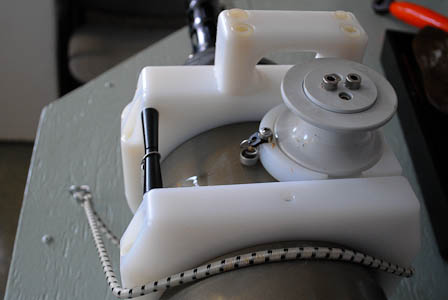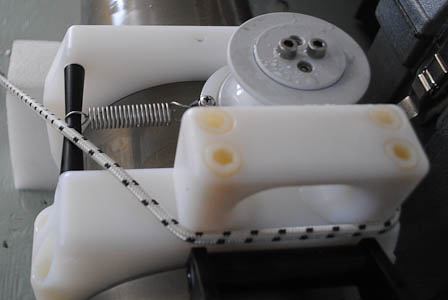Alex KainSeptember 23, 2009One of the main goals of the Beaufort Gyre expedition is to recover ocean profilers that have been documenting the conditions of the Beaufort Sea over the past year. Though different in design, profilers all operate by the same method. A buoy or mooring suspends a line in the water that a profiler climbs up and down to monitor ocean water at various depths. WHOI's own Ice-Tethered Profiler (ITP) serves a dual purpose. In addition to monitoring ocean conditions, the ITP is frozen directly into a thick sheet of ice, allowing it to track the floe's movement over time. The data obtained by the ITP is sent via satellite twice daily to analysts at WHOI. ITPs help scientists understand the movement of ice throughout the Beaufort Sea during melting and freezing seasons. Though they are precise, costly instruments, retrieving ITPs requires more elbow grease and power than finesse and delicacy. Today WHOI scientists aboard the Louis, aptly named "The Buoy Boys," recovered the first profiler of the expedition, with assistance from the ship's crew. This particular mooring interested WHOI because earlier this year, it stopped transmitting ocean profiles. The device still transmitted its geographic coordinates, but WHOI scientists on board were determined to figure out what exactly had happened to their beloved ITP.
Though we could spot the ITP, we soon discovered that the device had fallen from its original mounting and was stuck in the ice. When a costly ocean monitor is wedged between multiple ice floes, each of which weighs a few tons, there's only one way to solve the problem: ram the floes with your ice-breaking ship. The ship made an initial charge toward the ITP to break up the surrounding ice, but once the sea foam settled and ice chunks stopped moving, the ITP was nowhere to be found. The solution: back up and ram the area yet again to knock the device from its hiding place, most likely from under a floe.
With the mooring on deck, scientists could begin determining why the ITP stopped functioning. Early hypotheses were that it had suffered some severe hardware damage or that its software had stopped functioning. Once recovered, the problem was readily evident. A spring meant to hold the profiler's motor against the 700 meter line had snapped, causing the profiler to sink to the bottom of the line and stop transmitting data.
For more information on ITPs, visit https://www.whoi.edu/itp. All text and photos property of Alex Kain. Last updated: October 7, 2019 | |||||||||||||||||||||||||||||||||||||||||||||||
Copyright ©2007 Woods Hole Oceanographic Institution, All Rights Reserved, Privacy Policy. | |||||||||||||||||||||||||||||||||||||||||||||||


